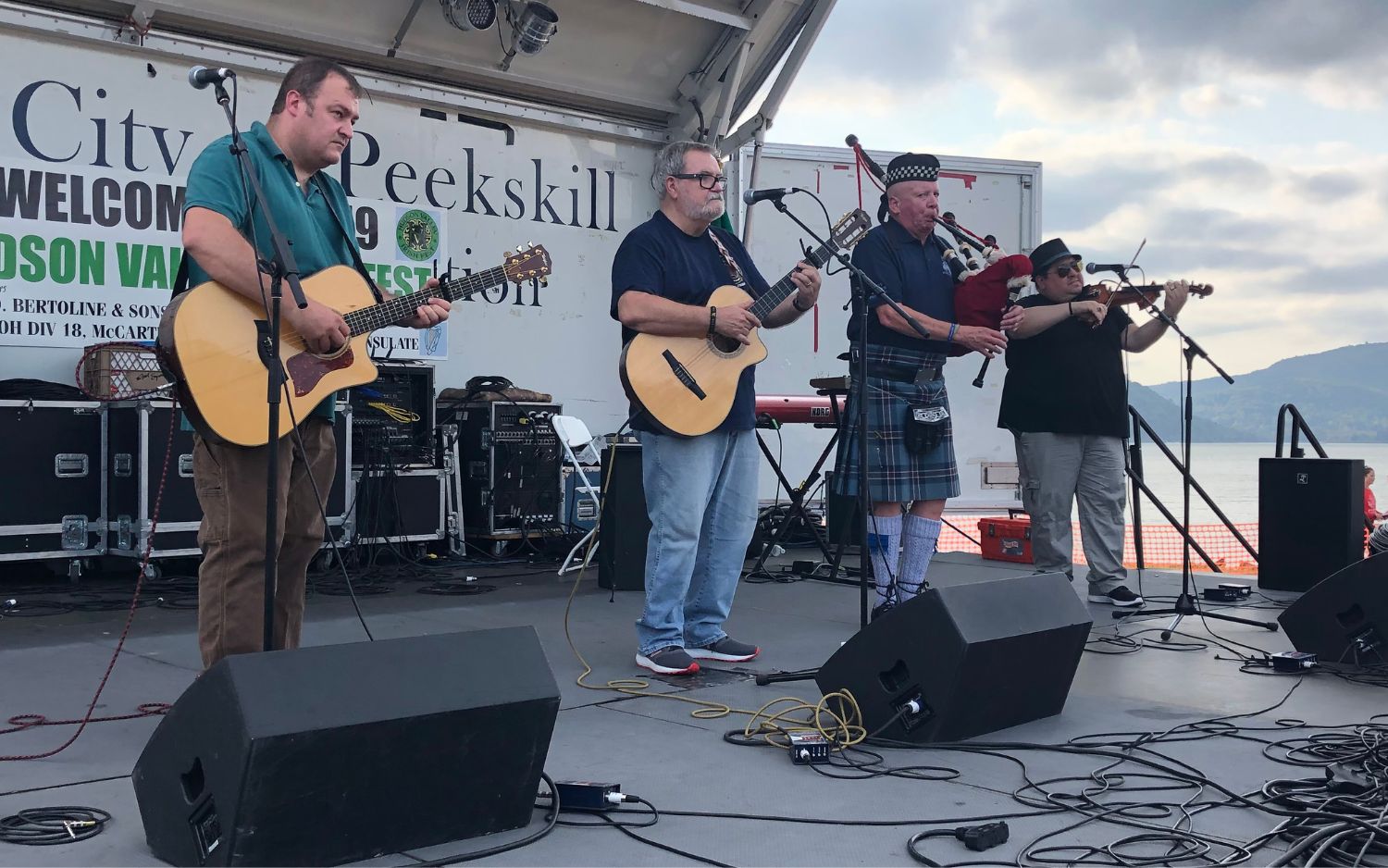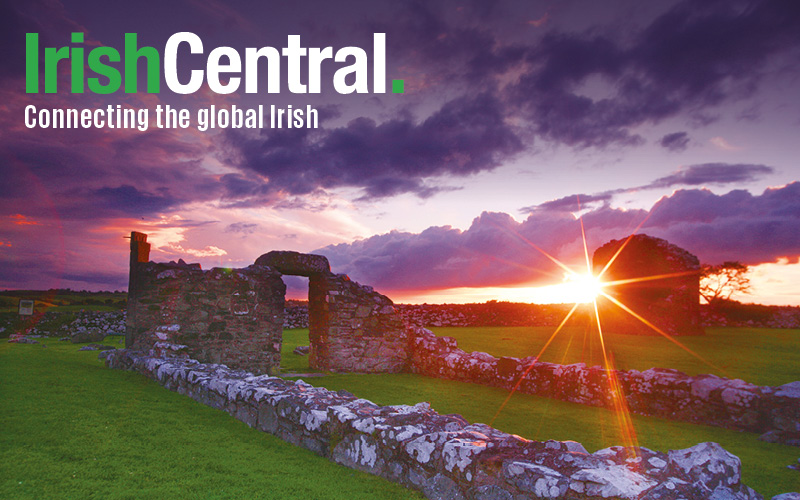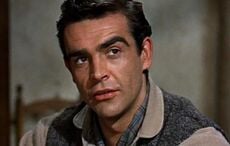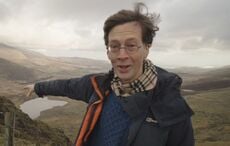Ferocious Mel Columbkille Gerard Gibson, bedecked in a bit of tartan kilt and his face painted blue, led the charge across the Curragh Racecourse into ancient battle.
The blue ‘woad plant’ dye on Gibson’s face was his war paint and he was playing the role of the legendary 13th century Scottish hero William Wallace. Rubber arrows flew through the air and plastic swords clashed as extra warriors from the Irish Army Reserve on mechanical horses recreated the historical battles of Wallace with the English at Stirling and Falkirk.
No local seemed to mind the director’s use of poetic license when the Irish switched sides to fight with their Scottish cousins at Falkirk even though they were, in fact, historically, somewhere else. The movie was Braveheart and most of it was filmed on location in Ireland on the plains of Kildare, and in the scenic hills and valleys of Wicklow.
Trim Castle, the largest Anglo-Norman castle on the island, and the nearby medieval Cistercian Bective Abbey in Co. Meath, also feature in many scenes. Braveheart won five Oscars and made it for heartthrob Mel and those knees that made grown women swoon in the aisles.
The highland desert of Wicklow has captured the imagination and been inspirational for many a film director. There are driving tours and a map that takes you round the sites of three major films that were made in Wicklow (Braveheart, Excalibur and Michael Collins).
The film sites are dotted around the county and you will experience some amazing vistas of barren stark landscapes and verdant valleys, which have been used as backdrops for many fine epics on the silver screen.
The Arthurian landscape of Sally Gap was the setting for the filming of Excalibur, and King Arthur himself tossed the famous sword into the dark and serene lake at Loch Tay. Ireland’s largest waterfall at Powerscourt near Enniskerry also appears in John Boorman’s Excalibur.
For the recent futuristic movie Reign of Fire, a mock medieval fortress popped up overnight at the site of an old lead mine at Wicklow Gap. Fire breathing dragons roamed through the misty heather only to disappear with the castle overnight without a trace when filming was done.
The real Hollywood is not far away in the west of Wicklow (the Hollywood of California was named after this small rural town). The Hollywood Inn has been a popular haunt for filmstars waiting for low mountain fog to lift, and for wannabes waiting for a role as an extra. Some scenes of Dancing at Lughnasa, starring Meryl Streep, were shot in the town.
Wicklow’s towns have also made frequent appearances on film. Bray was used for scenes in MyLeft Foot, Michael Collins and The Commitments. A house on the main street in Greystones was used in Angela’s Ashes. The Railway Bar in Rathdrum is in the background when Liam Neeson as Michael Collins gives one of his great orations.
In 1956, Youghal in Co. Cork was the setting for John Huston’s film adaptation of Herman Melville’s Moby Dick starring Gregory Peck. You can view some film memorabilia and pictures from the set in the Moby Dick pub in the town centre.
The opening sequences of Saving Private Ryan are perhaps the most famous scenes filmed in Ireland. Lauded as the most accurate depiction of the horrors of war ever, the film was showered with awards at the Oscars.
Director Steven Spielberg chose the golden sands of Curracloe Beach in Co. Wexford to set the Normandy landing at Omaha Beach early in the morning of D-Day. The bathers were banished from the beach and it was littered with the trappings of war. During filming Spielberg and Tom Hanks regularly enjoyed a drink and a game of pool in the Furlong Village Bar near the beach.
Depictions of Irish rural life on film haven’t always been flattering, but the scenery depicted has certainly been true to life. The Quiet Man, directed by John Ford in the 1950s, depicted a rather idyllic and stereotypic view of rural Ireland, but the film was very much a classic of its genre.
John Wayne and Maureen O’Hara were the leading actors and it was filmed in Cong in Co. Mayo. Some cast members were lucky enough to stay at the majestic Ashford Castle Hotel, and some of the scenes were shot in the castle grounds.
Much of the surrounding dramatic scenery depicted in the film is still the same today as it was then. There is a Quiet Man Tour of some film sites in the town, and you can visit a replica of Thornton’s traditional thatched cottage a few miles down the road.
Bull McCabe, played by Richard Harris, was perhaps the most extreme caricature of the rural Irish male farmer. His pride and his passion for the scrap of land he owned in The Field led to his ultimate downfall. The unique landscape around Leenane, Co. Galway, at the mouth of Killary Harbour (Ireland’s only fjord) is where Jim Sheridan’s film was located. The lovely Renvyle House Hotel nearby is where Harris and his co-stars stayed.
The Dingle Peninsula was the setting for two romantic epics from different eras. David Lean’s Ryan’s Daughter was filmed near Dunquin in the 1970s. The beautiful and contrasting Inch Strand and Coumeenole Strand feature prominently in the action. Two decades later Ron Howard’s film Far and Away, starring Tom Cruise and Nicole Kidman, was made in a landscape that hadn’t changed much since then.
Dublin features in many films but the most acclaimed was My Left Foot by the leading Irish director Jim Sheridan. Daniel Day Lewis was inspiring as the multi-talented Christy Brown. The film won two Oscars and remains the most successful wholly Irish-produced film. After seeing the film and then wandering around Dublin’s streets, it is easy to see how successful the city’s regeneration has been in the last decade.
The incredibly ornate Crown Liquor Saloon (a former Victorian gin palace) in Belfast was at the centre of the action of Carol Reed’s 1947 suspense drama Odd Man Out starring James Mason. Divorcing Jack was also filmed in the city in the late 1990s. Jim Sheridan’s film trilogy about the troubles in Northern Ireland (In the Name of the Father, Some Mother’s Son and The Boxer) were shot partly in Belfast. The opening scenes of Neil Jordan’s The Crying Game were shot in South Armagh.
In recent times, there has been a vibrant home-grown film industry both north and south of the border, and you could come across a film crew anywhere as you travel about the country. This is manifest in the growing international reputation of the many annual film festivals held in the major Irish cities.
Irish fiction has translated to film with great success. Maeve Binchy’s bestseller Circle Of Friends was filmed in picturesque Inistioge in Co. Kilkenny. The novels of James Joyce have graced the screen with much acclaim and success. Filmed in Dublin, the most popular is undoubtedly John Huston’s last film, The Dead. The setting was an old Georgian house that has recently been renovated as a tourist attraction and is situated on the Liffey just beside the appropriately named James Joyce Bridge.
In Angela’s Ashes, the film of the book by Frank McCourt, the city of Limerick was actually portrayed by building a set on Benburb Street near Collins Barracks in Dublin. Limerick is decidedly more prosperous than depicted in the film, as it has become the Silicon Valley of Ireland with a thriving computer and technology industry.
Dublin’s streets were also the setting for Alan Parker’s wonderful uplifting movie, The Commitments. This hilarious film was adapted from the novel by Dubliner Roddy Doyle. It doesn’t really provide an insight into the Irish music business, which is resoundingly more professional than depicted. You are unlikely to encounter a manager the like of Jimmy Rabbite or the notorious philanderer, Joey the Lips Fagan, at one of the live music venues in Dublin, but you can always shut your eyes and dream. The music will be good and it is likely it will have soul.
Contacts:
For walking tours on sites featured in The Quiet Man film, contact Margaret & Gerry Collins, Quiet Man Walking Tours;
Tel: 094 954 6089; www.quietman-cong.com.
The House where James Joyce set his book The Dead is at 15 Usher’s Island, Dublin;
Email: [email protected], web-site: www.jamesjoycehouse.com.
For tours of Wicklow film locations, contact: Wicklow Film Commission;
Tel: 0404 20176, Email: [email protected].
Film Festivals:
Dublin International Film Festival is in February.
Email: [email protected], web-site: www.dubliniff.com
Belfast Film Festival is in June.
Email: [email protected], web-site: www.belfastfilmfestival.org
Cork Film Festival is in October.
Email: [email protected], web-site: www.corkfilmfest.org
Derry film festival is in November.
web-site: www.foylefilmfestival.com




Comments